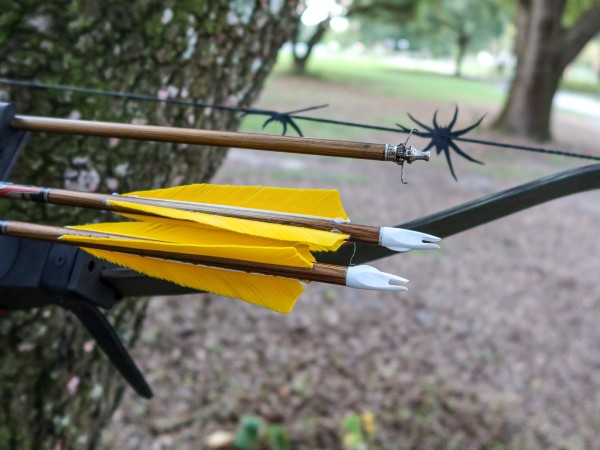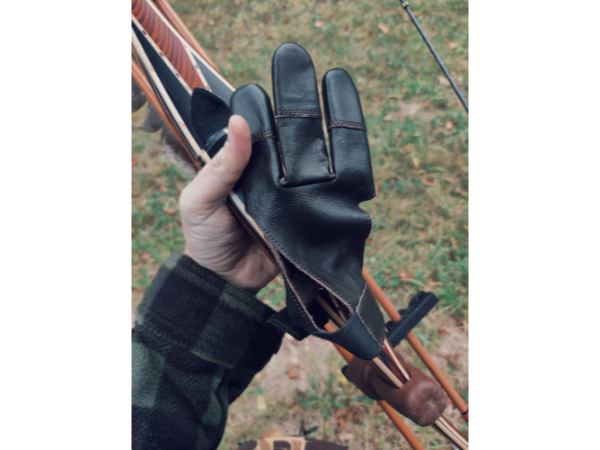Where the deer and the antelope play… As the words from Home on the Range suggest, the American pronghorn, familiarly known as antelope, practically defined the prairie wilderness settlers encountered as they pushed west across the Great Plains. There’s still something uniquely western about the species, and the very thought of hunting them evokes memories of sagebrush and wide-open spaces among those who have enjoyed their pursuit. For many eastern bowhunters, antelope represent a first opportunity to hunt big game other than whitetails or bear, making the pronghorn one of the most popular bowhunting quarries on the continent.
Biology and Distribution
A unique species with no close biological relatives, pronghorn occur naturally only in western North America, from northern Mexico to the southern Canadian prairie provinces and from the Dakotas, Nebraska and Kansas west to the Pacific coastal ranges. While Lewis and Clark encountered them in great numbers during their Voyage of Discovery, habitat destruction and unregulated subsistence hunting reduced their numbers from an estimated 30 million to as few as 20,000 early in the 20th century. Habitat protection and regulated hunting have allowed the species to recover throughout most of its original range, and the presence of strong populations of pronghorns throughout the West today represents one of the great accomplishments of modern game management.
Currently, almost all western states and provinces in the area outlined above offer at least limited antelope seasons, with tags offered by regulated drawing. With the highest number of antelope, Wyoming, Montana and Colorado support the largest annual harvest, but some of the biggest bucks come from areas such as Arizona, New Mexico, Nevada and the Dakotas, where there is less rifle hunting pressure.
To confuse matters, pronghorns aren’t really antelope at all. In contrast to true antelope, pronghorns shed their horns every year. Both sexes carry horns, although males are easy to distinguish by their heavier horn structure and prominent dark facial markings. Creatures of open terrain, antelope rely on speed and vision to escape predators. Pronghorns are the fastest hoofed mammals in the world, capable of cruising comfortably at 30 mph and accelerating to nearly twice that speed for short distances. Their eyesight is legendary, and they’re especially good at detecting motion and change in terrain contour along skylines. However, they are not good pattern recognizers and their vision tends to falter in low light, two key observations of particular interest to bowhunters.
While their eyesight is certainly their best defensive sense, antelope have reasonably good noses and can certainly detect hunters within bow range on an unfavorable wind. Antelope don’t have particularly keen ears. They do vocalize, and an alarmed antelope’s piercing nasal alarm snort can carry for miles. Bucks tending does also emit a peculiar donkey-like braying.
Antelope are significantly smaller than deer, which can cause range estimation problems for novice antelope hunters. Even large bucks seldom field dress at more than 80 pounds. While their coarse, hollow hair is well suited to surviving cold winter winds, it is quite delicate and hunters interested in saving a hide or cape need to handle animals very gently in the field. Antelope emit a distinctive goat-like odor that lingers on clothing and inside vehicles for weeks.
Prior to the fall rut, antelope bucks spend their time in bachelor groups. During the pre-rut, mature bucks disperse and establish their territories by urinating in fixed locations and scent marking vegetation. The actual rut begins mid-September and lasts approximately two weeks. During this period, dominant bucks establish harems, tending mature does and defending them from intruding bucks, some of whom, by the way, may have larger horns than the herd buck. Active rutting areas can be located through observation, and tend to remain constant from year to year.
In their natural habitat, antelope depend heavily on various sagebrush species for forage, and agricultural destruction of sagebrush grasslands contributed significantly to their original population decline. However, antelope have adapted to their changing environment, and now feed freely on numerous crops, especially winter wheat and alfalfa. In contrast to deer, antelope generally force their way awkwardly through fences, a habit that makes them unpopular with farmers. Fence crossings tend to remain constant and offer potential ambush locations for bowhunters.
Pronghorns and the Traditional Bowhunter
The combination of open habitat and exceptional eyesight would seem to make pronghorns a particularly challenging quarry for hunters willing to limit themselves to traditional archery tackle. But mastering a few methods, learning the hunting territory intimately, and studying the animals can make antelope hunting a feasible proposition even for a hunter with an effective shooting range of 20 yards.
Most bow-killed antelope are taken from blinds, usually at water sources or occasionally at fence crossings. Water hole hunting certainly offers a unique opportunity to observe antelope and other wildlife at close range. Contrary to popular opinion, constructing elaborate blinds is seldom necessary. As long as the water source offers some kind of bank to eliminate your profile (as most earthen dam ponds do), a simple strip of netting strung around two or three wooden posts will usually suffice. Antelope will tolerate a surprising amount of motion from such a simple setup, even at close range. Of course, more elaborate cloth blinds allow greater comfort during long hot days on the prairie.
Selecting a proper blind location requires some scouting. Study the tracks around water holes and avoid those without plenty of fresh antelope sign. Never underestimate the value of heading to a vantage point with a book and a water bottle and watching the antelope conduct their daily routines. In general, the more water sources available in a given area, the less productive hunting from blinds will be. And a fall rainstorm will end water hole hunting promptly, as antelope would rather lick mud from an old cow track than travel to water. Antelope tend to avoid large reservoirs, which is good, since big water reduces shooting opportunities with the bow. Decoying represents another specialized archery antelope hunting technique.
Decoying depends on the aggressive instincts of the antelope herd buck defending his harem against intruders. In the right place at the right time, a decoy can produce spectacular results. While bucks will sometimes travel considerable distances to a decoy, in general the closer the hunter can get prior to presenting the decoy, the more likely an aggressive response, which often means lots of belly crawling. Getting between a herd buck and his harem, as when the herd buck has just chased off another intruder, represents a great decoying opportunity. All kinds of decoys have been used successfully on antelope, and old timers often lured curious bucks into rifle range with nothing more elaborate than a white handkerchief fluttered above the sage. Lightweight commercially available models have the advantage of being easy to carry during long stalks across flat terrain.
Decoying suffers from several limitations. While any antelope will occasionally investigate a decoy, the kind of aggressive response likely to lead to a big buck within bow range only occurs during the peak of the rut. Anytime you can observe mature bucks tolerating each other’s presence, decoying is unlikely to produce a favorable response. And if a buck does respond with a genuine charge, he will likely be alert and positioned unfavorably for a shot, at least with regard to the decoy. That’s why decoying is so much more effective with two hunters: one to run the decoy and the other to set up in front, downwind of the buck’s likely route of approach.
Finally, stalking remains a challenging if underutilized means of bowhunting antelope. Given their excellent vision and the open terrain antelope prefer, the difficulties are obvious, but it can be done. Choose hunting terrain with lots of contour, like winding creek bottoms. Stalk at first and last light, when antelope are likely to be active and their vision a bit less acute. Stick to the shadows and put the low sunlight behind you when possible. And learn as much as you can about rutting behavior. Sneaking in between a distracted herd buck and his does can produce opportunities for shots at surprisingly close range.
Because of their small size, thin hide and light bones, antelope don’t require heavy tackle. Any bow adequate for deer will suffice. Range estimation can be difficult in open terrain, and novice antelope hunters tend to shoot high. Antelope often provide tempting shot opportunities at ranges greater than one may be accustomed to. But despite their light structure, antelope are tough animals and shot placement remains as critical as with any big game species. Patience and discipline are more likely to produce favorable results than ill-considered attempts to extend one’s range.
Properly cared for, antelope meat makes delicious eating. Since antelope archery seasons usually take place in warm weather, it’s important to skin and cool the carcass as quickly as feasible in the field. Store the carcass in a porous cloth game bag in a shady place with plenty of air circulation and transport to a cooler as soon as possible.







Leave A Comment